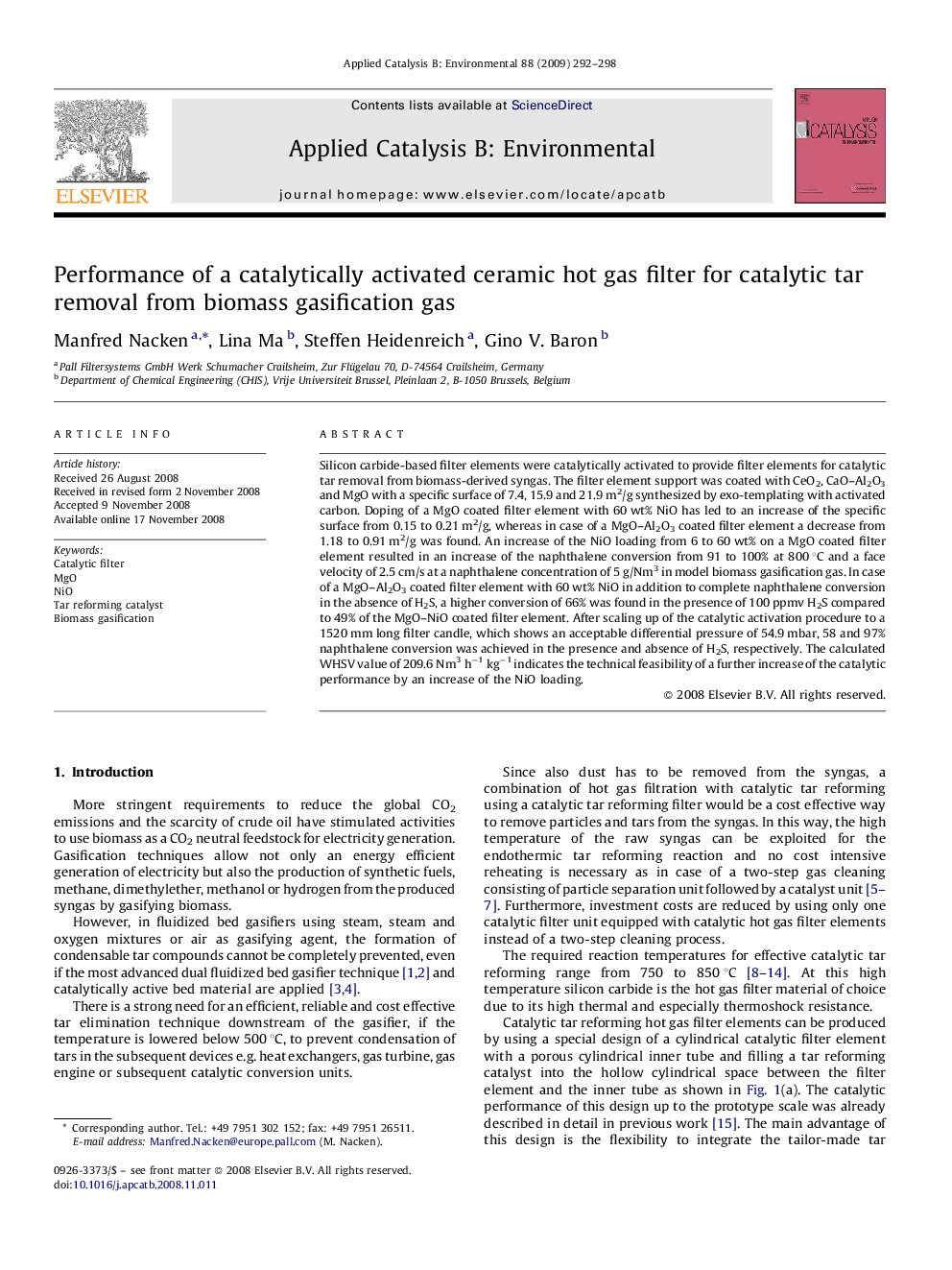| Article ID | Journal | Published Year | Pages | File Type |
|---|---|---|---|---|
| 47977 | Applied Catalysis B: Environmental | 2009 | 7 Pages |
Silicon carbide-based filter elements were catalytically activated to provide filter elements for catalytic tar removal from biomass-derived syngas. The filter element support was coated with CeO2, CaO–Al2O3 and MgO with a specific surface of 7.4, 15.9 and 21.9 m2/g synthesized by exo-templating with activated carbon. Doping of a MgO coated filter element with 60 wt% NiO has led to an increase of the specific surface from 0.15 to 0.21 m2/g, whereas in case of a MgO–Al2O3 coated filter element a decrease from 1.18 to 0.91 m2/g was found. An increase of the NiO loading from 6 to 60 wt% on a MgO coated filter element resulted in an increase of the naphthalene conversion from 91 to 100% at 800 °C and a face velocity of 2.5 cm/s at a naphthalene concentration of 5 g/Nm3 in model biomass gasification gas. In case of a MgO–Al2O3 coated filter element with 60 wt% NiO in addition to complete naphthalene conversion in the absence of H2S, a higher conversion of 66% was found in the presence of 100 ppmv H2S compared to 49% of the MgO–NiO coated filter element. After scaling up of the catalytic activation procedure to a 1520 mm long filter candle, which shows an acceptable differential pressure of 54.9 mbar, 58 and 97% naphthalene conversion was achieved in the presence and absence of H2S, respectively. The calculated WHSV value of 209.6 Nm3 h−1 kg−1 indicates the technical feasibility of a further increase of the catalytic performance by an increase of the NiO loading.
